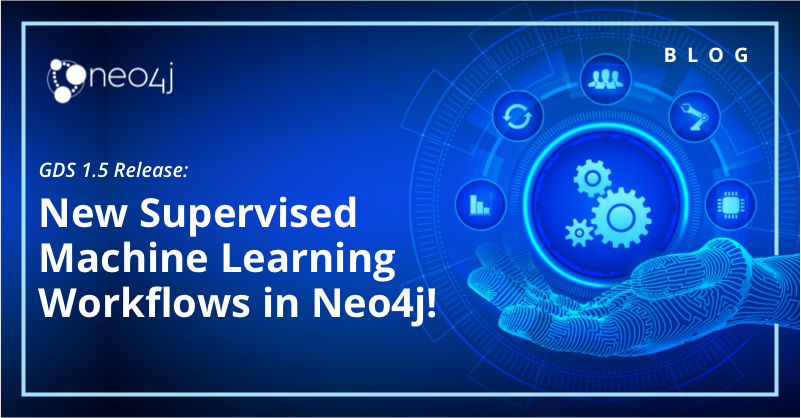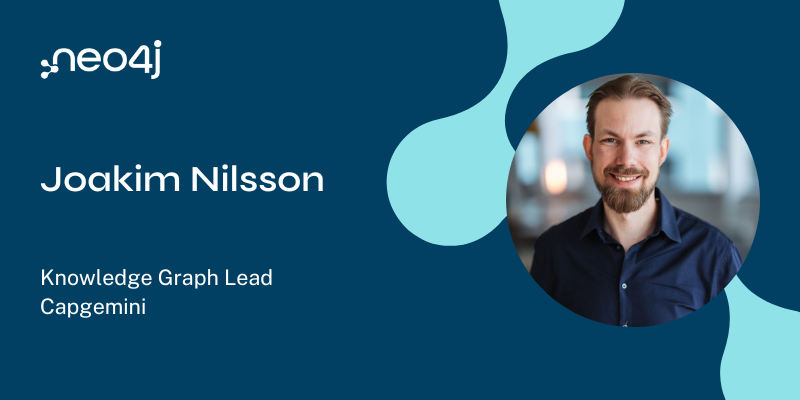This Week in Neo4j – English WordNet Graph, Supervised Machine Learning, Using Neo4j with GraalVM

Developer Relations Engineer
3 min read

Hi everyone,
The big graph news of this week is the release of version 1.5 of the Graph Data Science Library. Alicia Frame and Amy Hodler give us the lowdown, including the first supervised machine learning algorithms in the library.
In our video this week, Florent Biville shows us how to build our first Spring Data Neo4j 6 application.
Jesús Barrasa creates a graph of English WordNet, Jennifer Reif shows how to use Neoj4 with GraalVM, and Michael Hermans demos Csharp Superstack.
Cheers,
Mark and the Developer Relations team
Featured Community Member: Gabriel Tard
This week’s featured community member is Gabriel Tard.

Gabriel Tard – This Week’s Featured Community Member
Gabriel Tard is a new member of the Neo4j community but has been using Neo4j for the last two years to manage real estate data.
He is a prolific answerer of questions on the Neo4j community site , helping other users with questions about the Neo4j Desktop, Cypher querying, and data import. Gabriel has also provided lots of feedback on Neo4j Graph Academy’s online courses, helping improve those courses for future students.
Gabriel is currently looking for a role as a database admin/manager or trainer, so if you have a need for his Neo4j skills, check out the Neo4j community thread.
Starting an application with Spring Data Neo4j 6
Our video this week is from Florent Biville’s live stream.
This week Florent shows us how to build a Spring Data Neo4j 6 application on top of a graph of his Neo4j driver ecosystem metadata. Spring Data Neo4j 6 is the latest release of the popular Spring integration and was released in November 2020.
QuickGraph #16 The English WordNet in Neo4j (part 1)

Jesús Barrasa has been writing so many QuickGraph posts recently that it’s hard to keep up. This week we’ll focus on #16, in which he creates a graph of WordNet, a large lexical database of English words.
After importing the data using n10s, Jesus shows how to perform refactorings to make the resulting graph more suitable for the property graph model.
Supervised Machine Learning Workflows in Neo4j

Alicia Frame and Amy Hodler announced the release of version 1.5 of the Graph Data Science Library.
This version introduces new algorithms for node classification and link prediction, which are the first supervised machine learning algorithms added to the library. The HITS centrality and Speaker Listener Label Propagation overlapping community detection algorithms were also added.
Observable Graphs, py2neo Bulk Data API, HITS algorithm

- In Andreas Kollegger’s latest blog post, he shows how to share graphs created with Gram on ObservableHQ. He also introduces d3-gram, which render graphs to SVG anywhere.
- Martin Preusse and Nigel Small have started moving graphio functions into the new py2neo bulk data API.
- I wrote a blog post about the HITS centrality algorithm that was introduced in version 1.5.0 of the Graph Data Science Library.
- In NODES 2020 Extended, Michael Hermans shows us Csharp Superstack, a tool he built to create highly scalable Neo4j web apps without Javascript.
Language Buffet — Using Neo4j with GraalVM

Jennifer Reif has started working on a new Neo4j Labs project, where she is integrating Neo4j with GraalVM. GraalVM is a Java JVM and SDK that supports running additional programming languages.
In the blog post, Jennifer takes us through the integration strategies and then shows how to query Neo4j from Python, R, Ruby, and JavaScript using the Neo4j Java Driver.
Tweet of the Week
My favourite tweet this week was by Nur Aini Rakhmawati:
Thanks @neo4j ! #graphieaward pic.twitter.com/4sFFMWvCVn
— Nur Aini Rakhmawati (@nuraini) February 10, 2021
Don’t forget to RT if you liked it too!








